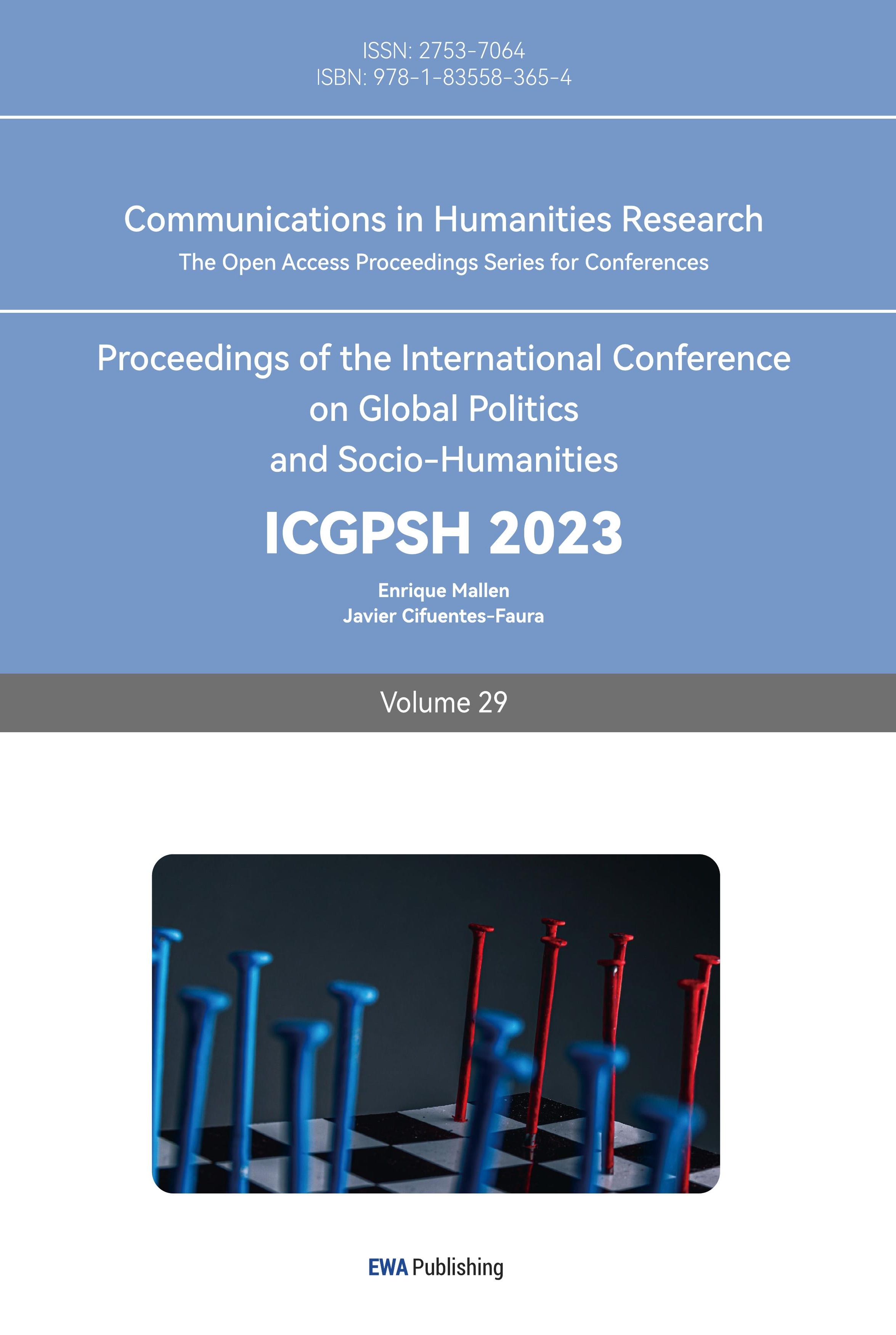1.Introduction
The Kushan Empire, which originated from a branch of the Yuezhi people, successfully conquered Bactria during the first century CE. Due to its geographic location between the Han Empire and the Roman Empire, the Kushans benefited from increasing trade and strengthened economic connections with both the East and the West [1]. Such prosperity is evident from the abundance of Kushan coins discovered in present-day Afghanistan [2]. These coins not only provide insights into the economic and political intentions of the ruler but also highlight the cultural dynamic of the empire.
In particular, the Kanishka coins, minted during the reign of Kanishka I from 127 to 150 CE, exhibit unprecedented Buddhist elements. These coins shed light on the political intentions of Kanishka I and the cultural backdrop of the Kushan Empire during his reign from 127 to 150 CE. This paper aims to analyze and compare the iconography of Kanishka coins under the coetaneous cultural and political context. In the following passage, I will argue that through the use of these coins, Kanishka intended to pacify the empire by promoting Buddhism, while still embracing other religions for the sake of diversity, harmony, and stability.
2.Kanishka’s Support of Buddhism
The rule of Kanishka corresponded to the increased Buddhist influence within the region. According to the sutra in the Chinese text “Miscellaneous Treasure” (杂宝藏经), Kanishka embraced Buddhism after a period of intense violence and a bloody rampage, because he was fearful and regretful of his sin and believed he was going to be punished [3]. Although its authenticity remains uncertain, it sheds light on the relevance of Kanishka and Buddhism from one perspective. Correspondingly, Buddhism started to be promoted by Kanishka during his reign, which can be seen from the emergence of Buddha figures on the coins in the same period.
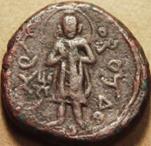
Figure 1: "Sakyamuni Buddha standing facing," coinindia.com, n.d. https://www.coinindia.com/galleries-kanishka.html.
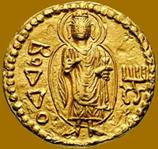
Figure 2: "The Buddha standing facing," coinindia.com, n.d.
https://www.coinindia.com/galleries-kanishka.html.

Figure 3: "Maitreya Buddha seated facing on a meditation platform," coinindia.com, n.d. https://www.coinindia.com/galleries-kanishka.html.
As shown in Figure 1-3, there are three distinct categories of Buddhist figures that existed during Kanishka's reign. The first type, as indicated by the Bactrian inscription “CAKAMANO BOYΔO” on the first coin (see Figure 1), portrays Sakyamuni Buddha. In this depiction, Sakyamuni Buddha is depicted with a solitary halo positioned behind his head. His right-hand rests on his chest in the "abhayamudra" gesture (meaning fearless), while the left side of his left hand is positioned at his waist [4]. According to the inscription “BOΔΔO” on the second coin (see Figure 2), the second type of figure is Buddha in a standing pose, who has a triple halo behind him, a robe in his left hand, and his hand on the right displaying the "abhayamudra" gesture, with the wheel of dharma held in the palm of his hand [5]. Lastly, the third type of coin bears the inscription "MHTPAΓO BOYΔO" and showcases a Maitreya Buddha. This depiction portrays Maitreya Buddha with a single halo positioned above his head, assuming a cross-legged sitting posture [5].
The aforementioned categories all exemplify Kanishka's acceptance and appreciation for Buddhism. Furthermore, the widespread use of coins as a form of circulating currency among the general population, coupled with the absence of Buddha's figure in earlier and subsequent periods, serves as further evidence of Kanishka's promotion of this expanding religion. In addition, his valuing of Buddhism was also reflected in other artifacts, architecture, and events. For instance, a Khotan scroll unearthed in Dunhuang recorded the origin of the Kanishka stupa, which reveals the close relationship between Kanishka and Buddhism:
"A desire thus arose in [Kanishka to build a vast stupa]….at that time the four world-regents learnt the mind of the king. So for his sake they took the form of young boys….[and] began a stupa of mud....the boys said to [Kanishka] ‘We are making the Kanishka-stupa.’….At that time the boys changed their form....[and] said to him, ‘Great king, by you according to the Buddha’s prophecy is a Sangharama to be built wholly (?) with a large stupa and hither relics must be invited which the meritorious good beings...will bring. [6]"
Moreover, there was also a Buddhist monastic establishment found in the Ambaran site from the 1st century CE to the 3rd century CE, which reflects the prosperity of Buddhism during that time [7]. These additional pieces of evidence can provide further insight into Kanishka's endorsement of Buddhism.
Hence, according to the coin and other simultaneous artifacts, Kanishka’s evident support and dissemination of Buddhism could lay the foundation for further political means.
3.Kanishka’s Political Intention
During Kaniska’s reign (127-150 CE), the Kushan territory reached its greatest extent and further extended from central Asia to the Indo-Gangetic plain, revealing Kanishka’s political abilities and ambitions [8]. Moreover, the Rabatak inscription, a stone that recorded Kanishka’s rule, directly discloses Kanishka’s active intention to consolidate his empire through religious activities:
“And the king, the son of the gods, was *pacifying all India from the year one to the year *six. [So] the temple was *founded in the year one; then in the *third year also……according to the king’s command, many *rites were endowed, many attendants were endowed, many…[were endowed. And] King [Kanishka] gave the fortress to the gods, and for these freemen [who] … in Bage·[ab]…[9]”
According to this inscription, “the king, the son of the gods” refers to Kanishka and thus accentuated the divinity of authority and dominion. The following text reflects his aim to enhance political stability and gain more support from gods and civilians, which also corroborates his intention of pacifying the empire.
Additionally, such political aim was also revealed by the language used for the Kanishka coin’s inscription. Prior to Kanishka's reign, the coins were typically bilingual, featuring inscriptions in a combination of Greek and Kharoshthi scripts. However, during Kanishka’s reign, the language of the coin exhibited a tendency of monolingualism – the language has shifted from Greek and Kharoshthi to Bactrian in the Greek alphabet [10]. The linguistic shift on Kanishka coins may attest to his intention of unifying people from different cultural and linguistic backgrounds, as well as fostering social harmony and cohesion.
Lastly, Buddhism, Kanishka's revered religion, happened to undergo a schism around his reign. The conflict between doctrine and philosophy among the monks led to the emergence of Hinayana Buddhism and Mahayana Buddhism, which Kanishka promoted the latter [11]. Kanishka's endorsement of Mahayana Buddhism is evident in various texts, including Sarvastivadin and Mahayana scriptures, which have been preserved in languages such as Iranian, Central Asian, and Chinese [8]. Since Mahayana Buddhism advocates equality and benevolence, with salvation for all beings, this religion’s ideology fits well with Kanishka’s political needs because of its ability to soothe the Kushan people [12]. Hence, it was likely for Kanishka to utilize the philosophy of Mahayana as a general framework of the civilian’s common beliefs in order to accomplish his goal of pacifying the Kushan empire.
Thus, through Kanishka’s political aim reflected by the stone inscription, the shift of language in the Kanishka coins, and the ideology of Mahayana Buddhism supported by Kanishka, it was possible that Kanishka adopted the promotion of Buddhism as his political means.
4.The Complexity of Kushan Religion during Kanishka’s Reign
Nevertheless, additional evidence also suggests that King Kanishka did not exclude other religions during his reign. In fact, despite Kanishka’s patronage of Mahayana Buddhism, he also encouraged religious diversity, which can be seen in several types of coinage during the same time with the Kanishka coins containing Buddhist elements.
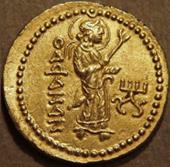
Figure 4: "Goddess Nana standing right," coinindia.com, n.d.
https://www.coinindia.com/galleries-kanishka.html.
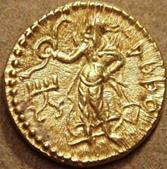
Figure 5: "God of metals Athsho standing facing," coinindia.com, n.d. https://www.coinindia.com/galleries-kanishka.html.

Figure 6: "Solar deity Helios standing facing," coinindia.com, n.d. https://www.coinindia.com/galleries-kanishka.html.
Figure 4-6 represents a series of coins comprising elements of other religions during Kanishka’s reign. When a comprehensive look is taken at all the coins from Kanishka's reign, religious elements such as Greek, Iranian, Bactrian Zoroastrian, and Hindu deities all appeared. For example, the goodness Nana in Figure 4 was an Iranian deity combined with Sumero-Akkadian elements [13]. Athsho, as appeared in Figure 5, is a Kushan fire god associated with Azar, the Zoroastrian concept of holy god, and Hephaistos, the Greek god of fire [14]. The goodness portrayed in Figure 6 is Helios, who is the Greek solar deity [15]. Therefore, because of the coin's circulating and widespread nature, the gods of different religions on the coins also reflected Kanishka's religious inclusiveness.
Additionally, the “Kanishka casket” found in a relic chamber in the Kanishka stupa also revealed the diversity of Kanishka’s religious identity. This reliquary not only contains Buddha on a lotus pedestal but also has the Iranian lunar and solar deities Mao and Miiro, and a garland in Hellenistic style (see Figures 7 & 8) [16]. Furthermore, since it has been dated back to the first year of his reign (127 CE), it explicitly demonstrates Kanishka’s respect for multiple religions.

Figure 7: "A replica of the 'Kanishka Reliquary'," britishmuseum.org, n.d. https://www.britishmuseum.org/collection/image/539043001.
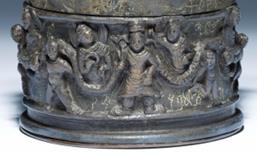
Figure 8: “A close-up of the Reliquary”, britishmuseum.org, n.d. https://www.britishmuseum.org/collection/image/539043001.
Hence, the coexistence and fusion of multiple cultures and religions on coins and artifacts also serve to reflect King Kanishka’s tolerance for diversity in order to respect the complexity of beliefs in the territories and maintain the overall stability of the empire. The diversity of the deities on the coins can satisfy most Kushans from different cultures because they can easily acquire a sense of belonging.
5.Conclusion
In conclusion, the multifaceted analysis of the Kanishka coins and the additional evidence suggests that the unprecedented Buddhist elements on Kushan coins during Kanishka's reign, his support for Buddhism, and his political aims made it likely that his patronage of Mahayana Buddhism was utilized as a political tool to pacify the Kushan empire. However, to better maintain stability and harmony in the region, the king also strategically respected other religions, in response to the religious complexity resulting from flourishing trade and cultural exchange during Kanishka’s time. Considering this, it is possible that Mahayana Buddhism was not even the predominant religion in the Kushan Empire during Kanishka's reign, but rather a facet of the diverse and thriving culture.
References
[1]. A. R. Mukhamedjanov, "ECONOMY AND SOCIAL SYSTEM IN CENTRAL ASIA IN THE KUSHAN AGE," in History of Civilizations of Central Asia: The Development of Sedentary and Nomadic Civilizations, 700 B. C. to A (Paris: UNESCO, 1994), 256.
[2]. Razieh Taasob, "Language and Legend in Early Kushan Coinage: Progression and Transformation," in Dabir: The Digital Archive of Brief Notes & Iran Review (2018), 77-79.
[3]. Kekaya, Miscellaneous treasure (n.d), chap.7.
[4]. "The COININDIA Coin Galleries: Kushan: Kanishka," COIN INDIA: The Virtual Museum of Indian Coins, accessed August 13, 2023, https://www.coinindia.com/galleries-kanishka.html.
[5]. Lisheng Gu, The Iconographic Study of Deities on Kushan Coins (2022)
[6]. "Kanishka Stupa," Inspiring Peshawar, last modified April 16, 2017, https://peshawarreview.wordpress.com/2015/05/13/kanishka-stupa/.
[7]. Arjun Singh, "THE BUDDHIST ARCHAEOLOGICAL SITE OF AMBARAN IN A HISTORICAL RETROSPECT," JOURNAL OF HISTORY, ART AND ARCHAEOLOGY 2, no. 1 (2022): 64-65, doi:10.47509/jhaa.2022.v02i01.05
[8]. Jason Neelis, "HISTORICAL CONTEXTS FOR THE EMERGENCE AND TRANSMISSION OF BUDDHISM WITHIN SOUTH ASIA," in Early Buddhist Transmission and Trade Networks: Mobility and Exchange Within and Beyond the Northwestern Borderlands of South Asia (Leiden: BRILL, 2010), 132.
[9]. Sims-Williams Nichola, The Bactrian Inscription of Rabatak: A New Reading (Bulletin of the Asia Institute, 2004), 56.
[10]. Razieh Taasob, "Language and Legend in Early Kushan Coinage: Progression and Transformation," DABIR 5, no. 1 (2018): 73, doi:10.1163/29497833-00501011.
[11]. Thai L.V, "Buddhism During the Time of Kanishka I Form and Changes," (PhD diss., University of Allahabad, 2015), http://hdl.handle.net/10603/258270.
[12]. Xiaoxiao Pang, Multiculturalism and Gandhara Art: A reexamination of Buddhism and the development of Buddhist art in the Kushan (Journal of Sichuan University, 2017)
[13]. Azarpay, G. “Nanâ, the Sumero-Akkadian Goddess of Transoxiana.” Journal of the American Oriental Society 96, no. 4 (1976): 536–42. https://doi.org/10.2307/600086.
[14]. "AE Tetradrachm (w/fire God Athsho), Kanishka (c.127-152 AD), Kushan Empire," NumisMall.com, accessed August 13, 2023, https://www.numismall.com/products/w50892.
[15]. "The COININDIA Coin Galleries: Kushan: Kanishka," COIN INDIA: The Virtual Museum of Indian Coins, accessed August 13, 2023, https://www.coinindia.com/galleries-kanishka.html.
[16]. "Kanishka Casket," Hellenica World, accessed August 13, 2023, https://www.hellenicaworld.com/Greece/LX/en/KanishkaCasket.html.
Cite this article
Liu,Q. (2024). Cultural Embracement and Incorporation: The Analysis of Kanishka Coins. Communications in Humanities Research,29,225-230.
Data availability
The datasets used and/or analyzed during the current study will be available from the authors upon reasonable request.
Disclaimer/Publisher's Note
The statements, opinions and data contained in all publications are solely those of the individual author(s) and contributor(s) and not of EWA Publishing and/or the editor(s). EWA Publishing and/or the editor(s) disclaim responsibility for any injury to people or property resulting from any ideas, methods, instructions or products referred to in the content.
About volume
Volume title: Proceedings of the International Conference on Global Politics and Socio-Humanities
© 2024 by the author(s). Licensee EWA Publishing, Oxford, UK. This article is an open access article distributed under the terms and
conditions of the Creative Commons Attribution (CC BY) license. Authors who
publish this series agree to the following terms:
1. Authors retain copyright and grant the series right of first publication with the work simultaneously licensed under a Creative Commons
Attribution License that allows others to share the work with an acknowledgment of the work's authorship and initial publication in this
series.
2. Authors are able to enter into separate, additional contractual arrangements for the non-exclusive distribution of the series's published
version of the work (e.g., post it to an institutional repository or publish it in a book), with an acknowledgment of its initial
publication in this series.
3. Authors are permitted and encouraged to post their work online (e.g., in institutional repositories or on their website) prior to and
during the submission process, as it can lead to productive exchanges, as well as earlier and greater citation of published work (See
Open access policy for details).
References
[1]. A. R. Mukhamedjanov, "ECONOMY AND SOCIAL SYSTEM IN CENTRAL ASIA IN THE KUSHAN AGE," in History of Civilizations of Central Asia: The Development of Sedentary and Nomadic Civilizations, 700 B. C. to A (Paris: UNESCO, 1994), 256.
[2]. Razieh Taasob, "Language and Legend in Early Kushan Coinage: Progression and Transformation," in Dabir: The Digital Archive of Brief Notes & Iran Review (2018), 77-79.
[3]. Kekaya, Miscellaneous treasure (n.d), chap.7.
[4]. "The COININDIA Coin Galleries: Kushan: Kanishka," COIN INDIA: The Virtual Museum of Indian Coins, accessed August 13, 2023, https://www.coinindia.com/galleries-kanishka.html.
[5]. Lisheng Gu, The Iconographic Study of Deities on Kushan Coins (2022)
[6]. "Kanishka Stupa," Inspiring Peshawar, last modified April 16, 2017, https://peshawarreview.wordpress.com/2015/05/13/kanishka-stupa/.
[7]. Arjun Singh, "THE BUDDHIST ARCHAEOLOGICAL SITE OF AMBARAN IN A HISTORICAL RETROSPECT," JOURNAL OF HISTORY, ART AND ARCHAEOLOGY 2, no. 1 (2022): 64-65, doi:10.47509/jhaa.2022.v02i01.05
[8]. Jason Neelis, "HISTORICAL CONTEXTS FOR THE EMERGENCE AND TRANSMISSION OF BUDDHISM WITHIN SOUTH ASIA," in Early Buddhist Transmission and Trade Networks: Mobility and Exchange Within and Beyond the Northwestern Borderlands of South Asia (Leiden: BRILL, 2010), 132.
[9]. Sims-Williams Nichola, The Bactrian Inscription of Rabatak: A New Reading (Bulletin of the Asia Institute, 2004), 56.
[10]. Razieh Taasob, "Language and Legend in Early Kushan Coinage: Progression and Transformation," DABIR 5, no. 1 (2018): 73, doi:10.1163/29497833-00501011.
[11]. Thai L.V, "Buddhism During the Time of Kanishka I Form and Changes," (PhD diss., University of Allahabad, 2015), http://hdl.handle.net/10603/258270.
[12]. Xiaoxiao Pang, Multiculturalism and Gandhara Art: A reexamination of Buddhism and the development of Buddhist art in the Kushan (Journal of Sichuan University, 2017)
[13]. Azarpay, G. “Nanâ, the Sumero-Akkadian Goddess of Transoxiana.” Journal of the American Oriental Society 96, no. 4 (1976): 536–42. https://doi.org/10.2307/600086.
[14]. "AE Tetradrachm (w/fire God Athsho), Kanishka (c.127-152 AD), Kushan Empire," NumisMall.com, accessed August 13, 2023, https://www.numismall.com/products/w50892.
[15]. "The COININDIA Coin Galleries: Kushan: Kanishka," COIN INDIA: The Virtual Museum of Indian Coins, accessed August 13, 2023, https://www.coinindia.com/galleries-kanishka.html.
[16]. "Kanishka Casket," Hellenica World, accessed August 13, 2023, https://www.hellenicaworld.com/Greece/LX/en/KanishkaCasket.html.





